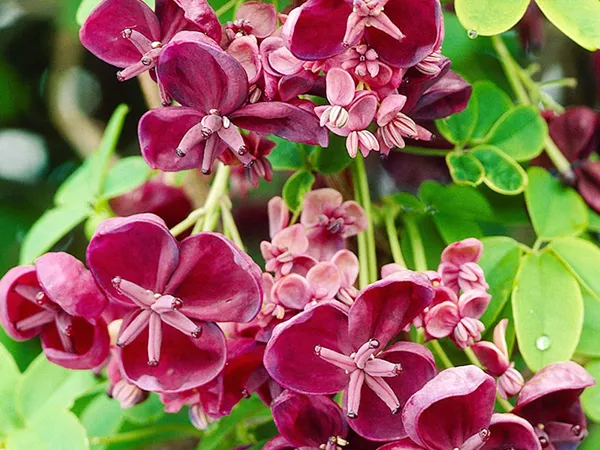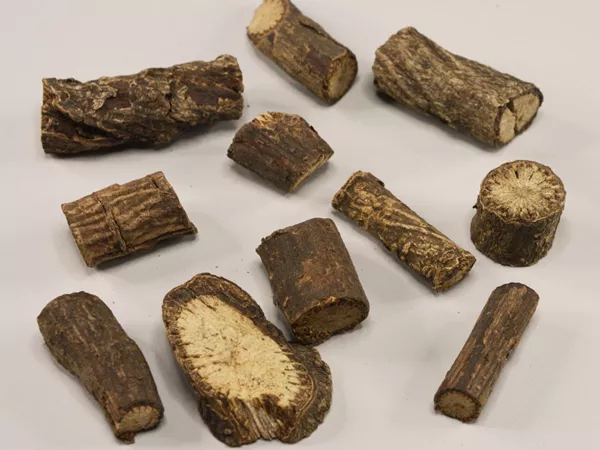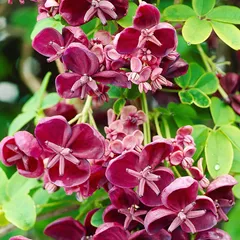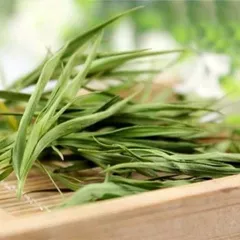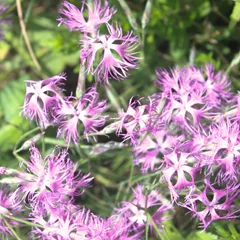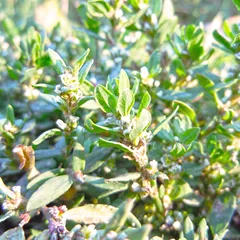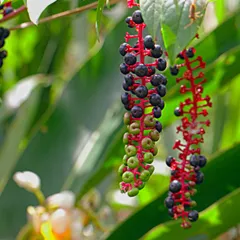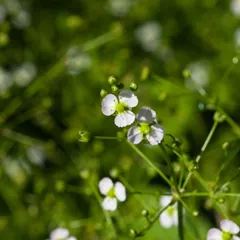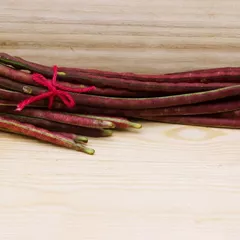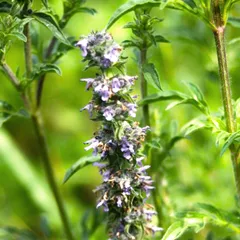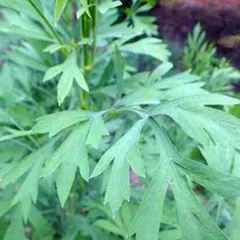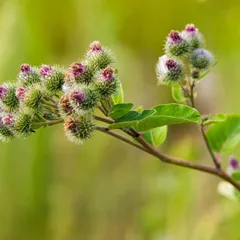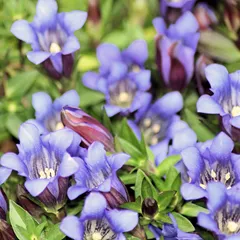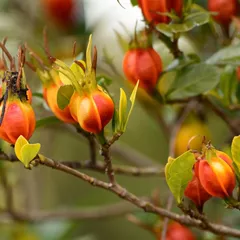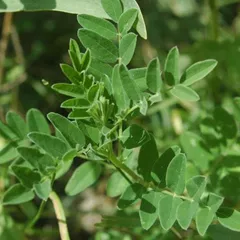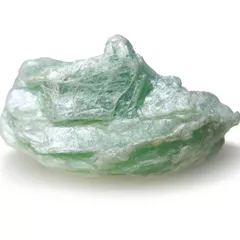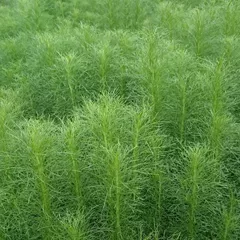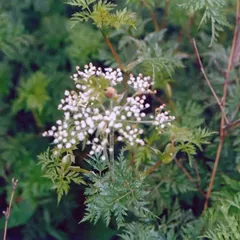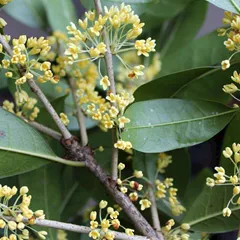Mu Tong
Mu Tong
English: Akebia stems
Chinese: 木通
Parts used: Dried stem
TCM category: Herbs that drain Dampness
TCM nature: Cold
TCM taste(s): Bitter
Organ affinity: Heart Lung Small intestine
Scientific name: Akebia quinata or Akebia trifoliata
Other names: Chocolate vine
Use of Mu Tong (akebia stems) in TCM
Please note that you should never self-prescribe TCM ingredients. A TCM ingredient is almost never eaten on its own but as part of a formula containing several ingredients that act together. Please consult a professional TCM practitioner, they will be best able to guide you.
Preparation: Remove impurities, soak in water, remove after soaking, slice and dry.
Dosage: 3 - 9 grams
Main actions according to TCM*: Encourages urination and clears Heat. Clears Heat and inflammation of the Heart. Promotes lactation. Moves and smoothes the flow of Blood. Used for painful obstruction associated with either Dampness, Blood Stagnation, Wind or Heat.
Primary conditions or symptoms for which Mu Tong may be prescribed by TCM doctors*: Urinary difficulties Urinary tract infection Edema Irritability Scanty urination Mouth ulcers Low milk supply Amenorrhea Joint pain Strangury
Contraindications*: This herb should not be used during pregnancy and should be used with caution with patients who have Yin Deficiency.
Common TCM formulas in which Mu Tong is used*
Dao Chi San
Source date: 1119 AD
Number of ingredients: 4 herbs
Formula key actions: Clears the Heart. Promotes urination.
Conditions targeted*: StomatitisOral thrush and others
Mu Tong is a king ingredient in Dao Chi San. Like the name indicates, it means it has more power than other ingredients in the formula.
In Dao Chi San, Mu Tong clears Heat from the Heart Channel in the upper body, and clears Heat and promotes urination within the Small Intestine Channel below.
Ba Zheng San
Source date: 1107 AD
Number of ingredients: 9 herbs
Formula key actions: Clears Heat and Fire. Promotes urination. Unblocks painful urinary dribbling.
Conditions targeted*: GlomerulonephritisCystitis and others
Mu Tong is a deputy ingredient in Ba Zheng San. This means it helps the king ingredient(s) treat the main pattern or it serves to treat a coexisting pattern.
In Ba Zheng San, Mu Tong is bitter and cold. It is very effective in
clearing the Stagnation caused by Dampness. It also clears Heat and promotes urination. It assists the king ingredients in unblocking any painful urinary dribbling.
Shu Zao Yin Zi
Source date: 1253 AD
Number of ingredients: 11 herbs
Formula key actions: Purges and drives out Water. Clears Wind. Releases from the Exterior .
Conditions targeted*: Nephritis with EdemaIncreased intracranial pressure and others
Mu Tong is a deputy ingredient in Shu Zao Yin Zi. This means it helps the king ingredient(s) treat the main pattern or it serves to treat a coexisting pattern.
In Shu Zao Yin Zi, Mu Tong drains pathogens from the Small Intestine.
Comparing with the other diuretics Adzuki beans which targets pathogens that have visible forms such as edema, Akebia stem also invigorates the Blood.
Due to the concerns regarding the potential nephrotoxic side effects of the variations of Akebia stem that is present in the marketplace, it is better to substitute another herb for it. Tetrapanax piths or Plantain seeds might be suitable.
Xiao Feng San
Source date: 1617 AD
Number of ingredients: 13 herbs
Formula key actions: Disperses Wind. Eliminates Dampness. Clears Heat. Cools the Blood.
Conditions targeted*: UrticariaEczema and others
Mu Tong is a deputy ingredient in Xiao Feng San. This means it helps the king ingredient(s) treat the main pattern or it serves to treat a coexisting pattern.
In Xiao Feng San, Mu Tong drains Damp-Heat through the urine.
Long Dan Xie Gan Tang
Source date: 1682 AD
Number of ingredients: 10 herbs
Formula key actions: Clears Heat and Fire from the Liver and Gallbladder. Clears and drains Damp-Heat from the Lower Burner.
Conditions targeted*: FurunclesPurulent otitis and others
Mu Tong is an assistant ingredient in Long Dan Xie Gan Tang. This means that it either serves to reinforces the effect of other ingredients or it moderates their toxicity.
In Long Dan Xie Gan Tang, Mu Tong works together with Plantain seeds (Che Qian Zi) and Water plantain (Ze Xie), other assistant herbs in this formula, to drain Heat from the Upper Burner and eliminate Damp-Heat from the Lower Burner by promoting urination.
This provides a pathway to drain Liver Fire. Because the Liver stores the Blood, Heat in the Liver Meridian can readily injure the Yin and Blood.
Tong Ru Dan
Source date: 1826 AD
Number of ingredients: 6 herbs
Formula key actions: Tonifies the Qi and Blood. Removes Stagnation from the breast connecting Meridians.
Mu Tong is an assistant ingredient in Tong Ru Dan. This means that it either serves to reinforces the effect of other ingredients or it moderates their toxicity.
In Tong Ru Dan, Mu Tong removes Stagnation from the breast-connecting Meridians.
Gan Lu Xiao Du Dan
Source date: 1831 AD
Number of ingredients: 11 herbs
Formula key actions: Resolves Dampness and transforms turbidity. Clears Heat and resolves Toxicity .
Conditions targeted*: Acute gastroenteritisEnteric fever and others
Mu Tong is an assistant ingredient in Gan Lu Xiao Du Dan. This means that it either serves to reinforces the effect of other ingredients or it moderates their toxicity.
In Gan Lu Xiao Du Dan, Mu Tong clears Heat and facilitates the resolution of Dampness, assisting Talc and Virgate wormwood in guiding Damp-Heat out though the urine.
Guo Qi Yin
Source date: 1602 AD
Number of ingredients: 11 herbs
Formula key actions: Warms the menses. Dispels blood Stagnation. Nourishes the blood .
Conditions targeted*: Irregular menstruationDysmenorrhea and others
Mu Tong is an assistant ingredient in Guo Qi Yin. This means that it either serves to reinforces the effect of other ingredients or it moderates their toxicity.
In Guo Qi Yin, Mu Tong promotes the flow of Body Fluids.
Dang Gui Si Ni Tang
Source date: 220 AD
Number of ingredients: 7 herbs
Formula key actions: Warms the Channels. Disperses Cold. Nourishes the Blood. Unblocks the Blood vessels.
Conditions targeted*: Vascular headacheRaynaud's disease and others
Mu Tong is an envoy ingredient in Dang Gui Si Ni Tang. This means that it directs the formula towards certain area of the body and/or harmonizes the actions of other ingredients.
In Dang Gui Si Ni Tang, Mu Tong facilitates flows inside channels and vessels. It also balances the warming effect of other ingredients by removing any excessive Heat. This strengthens the actions of the other ingredients and focuses their effects on the channels and vessels.
Key TCM concepts behind Mu Tong's properties
In Traditional Chinese Medicine (TCM), Mu Tong belongs to the 'Herbs that drain Dampness' category. These herbs are typically diuretics, meaning that they promotes the increased production of urine in order to remove Dampness that has accumulated in the body. According to TCM Dampness accumulates first in the lower limbs, causing edema and impaired movement. From there, if unchecked, it can move upward and impair digestion and eventually the respiratory system.
Furthermore Mu Tong is Cold in nature. This means that Mu Tong typically helps people who have too much 'Heat' in their body. Balance between Yin and Yang is a key health concept in TCM. Those who have too much Heat in their body are said to either have a Yang Excess (because Yang is Hot in nature) or a Yin deficiency (Yin is Cold in Nature). Depending on your condition Mu Tong can help restore a harmonious balance between Yin and Yang.
Mu Tong also tastes Bitter. The so-called 'Five Phases' theory in Chinese Medicine states that the taste of TCM ingredients is a key determinant of their action in the body. Bitter ingredients like Mu Tong tends to have a cleansing action on the body by clearing Heat, drying Dampness and promoting elimination via urination or bowel movements.
The tastes of ingredients in TCM also determine what Organs and Meridians they target. As such Mu Tong is thought to target the Heart, the Lung and the Small intestine. In addition to regulating Blood flow, in TCM the Heart is believed to be the store of the 'Mind' which basically refers to someone's vitality. In addition to performing respiration, the Lungs are thought in TCM to be a key part of the production chain for Qi and the Body Fluids that nourish the body. Like the Stomach, the Small Intestine has a digestive role, extracting the "pure" part of what we injest to the Spleen and the "impure" down to the Large Intestine.

